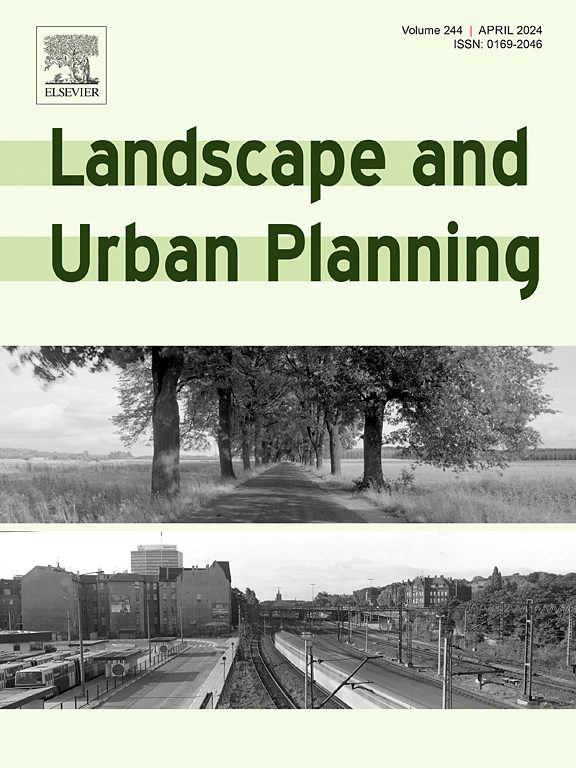Landscape modification and species traits shape seasonal wildlife community dynamics within an arid metropolitan region
IF 7.9
1区 环境科学与生态学
Q1 ECOLOGY
引用次数: 0
Abstract
Understanding the spatial factors that shape wildlife communities across human-modified landscapes is vital for biodiversity conservation. Although human activities can decrease biodiversity, humans can also provide resources, which can potentially increase species richness. However, it is largely unknown how seasonal community characteristics vary in relation to the characteristics of both the landscape and species. For this study, we evaluated how landscape characteristics and species traits influenced habitat use (i.e., patch occupancy, persistence, and colonization) and species richness across seasons and a gradient of urbanization, hypothesizing that habitat use and richness would increase with patch diversity and seasonally dynamic vegetation productivity but decrease with urbanization. We further predicted that use and richness would vary seasonally and increase in areas of urbanization during the summer season. Across the Phoenix Metropolitan Area, Arizona, we used 50 wildlife cameras to evaluate the wildlife community for one year (2019–2020). We estimated seasonal habitat use and richness of this wildlife community across the spring, summer, and winter seasons using multi-scale community occupancy models. As predicted, seasonal use and richness consistently demonstrated negative relationships with urbanization. Contrary to predictions, use and richness did not increase in urbanized areas during the summer season. However, habitat use further varied according to species traits, with larger-bodied species exhibiting higher site use in less urbanized landscapes. Overall, similarities in species richness across seasons and low colonization rates suggest that habitat quality and/or spatial barriers may restrict the ability of wildlife to use fragmented and urbanized landscapes. Limiting urbanization within currently wildland areas and enhancing spatial connectivity could improve the ability of wildlife communities to utilize temporally dynamic resources and persist across anthropogenic landscapes.
景观改造和物种特征塑造了干旱大都市区野生动物群落的季节性动态
了解人类改造景观中形成野生动物群落的空间因素对于保护生物多样性至关重要。虽然人类活动会降低生物多样性,但人类也可以提供资源,从而有可能增加物种的丰富性。然而,季节性群落特征如何随景观和物种特征的变化而变化,这在很大程度上还是个未知数。在这项研究中,我们评估了景观特征和物种特征如何在不同季节和城市化梯度中影响栖息地的利用(即斑块占据、持久性和定植)和物种丰富度,假设栖息地的利用和丰富度会随着斑块多样性和季节性动态植被生产力的增加而增加,但会随着城市化的发展而减少。我们进一步预测,栖息地的利用率和物种丰富度会随季节变化,夏季城市化地区的栖息地利用率和物种丰富度会增加。在亚利桑那州凤凰城都市区,我们使用 50 台野生动物相机对野生动物群落进行了为期一年(2019-2020 年)的评估。我们使用多尺度群落占据模型估算了该野生动物群落在春季、夏季和冬季的季节性栖息地使用情况和丰富度。正如预测的那样,季节性使用率和丰富度一直与城市化呈负相关。与预测相反,夏季城市化地区的使用率和丰富度并没有增加。然而,栖息地的利用因物种特征的不同而进一步变化,在城市化程度较低的地区,体型较大的物种对栖息地的利用率较高。总体而言,不同季节物种丰富度的相似性和较低的定殖率表明,栖息地质量和/或空间障碍可能会限制野生动物利用破碎化和城市化景观的能力。限制目前野生区域内的城市化并加强空间连通性,可以提高野生动物群落利用时间动态资源的能力,并在人为景观中持续存在。
本文章由计算机程序翻译,如有差异,请以英文原文为准。
求助全文
约1分钟内获得全文
求助全文
来源期刊

Landscape and Urban Planning
环境科学-生态学
CiteScore
15.20
自引率
6.60%
发文量
232
审稿时长
6 months
期刊介绍:
Landscape and Urban Planning is an international journal that aims to enhance our understanding of landscapes and promote sustainable solutions for landscape change. The journal focuses on landscapes as complex social-ecological systems that encompass various spatial and temporal dimensions. These landscapes possess aesthetic, natural, and cultural qualities that are valued by individuals in different ways, leading to actions that alter the landscape. With increasing urbanization and the need for ecological and cultural sensitivity at various scales, a multidisciplinary approach is necessary to comprehend and align social and ecological values for landscape sustainability. The journal believes that combining landscape science with planning and design can yield positive outcomes for both people and nature.
 求助内容:
求助内容: 应助结果提醒方式:
应助结果提醒方式:


